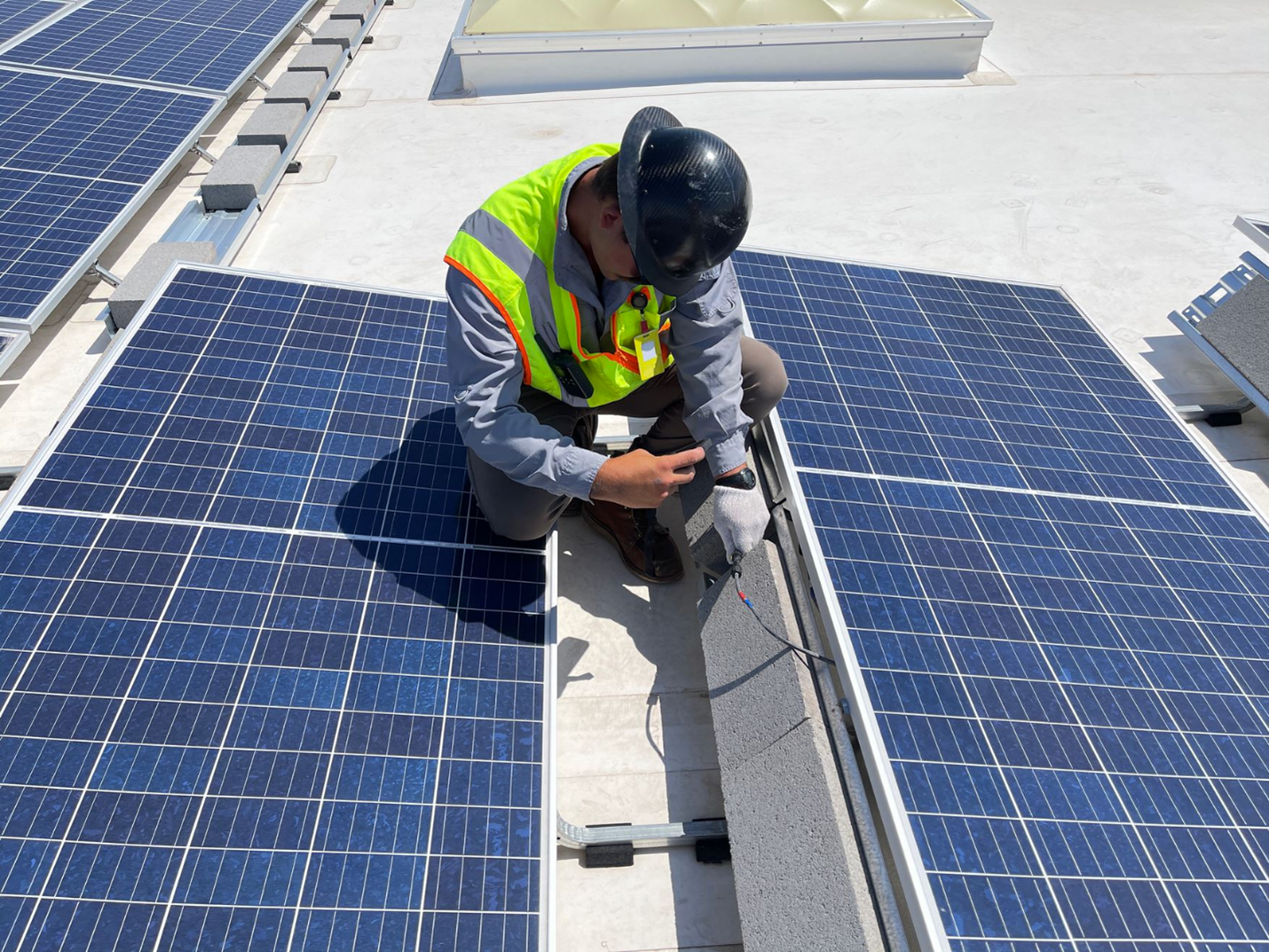George Touloupas, CEA’s Senior Director of Technology and Quality, presents a detailed look at the pv magazine indoor test report for the Longi Solar bifacial module with product code LR5-72HBD-535M.
Read MoreA leading private equity fund recently led an investment of over USD $100 million into a PV module manufacturer, supported by technical and market due diligence provided by CEA.
Read Morepv magazine added LETID testing to their set of benchmarking tests for PV modules, as the industry has improved its knowledge about the risks and mitigation of this relatively new mode of PV module degradation. George Touloupas, Senior Director of Technology and Quality at CEA, provided details and an introduction to LETID.
Read MoreThe United States faces a number of compelling issues in its push to expand solar. Clean Energy Associates CEO Andy Klump recently spoke to pv magazine about supply chains, domestic manufacturing, climate change, and COP.
Read MoreQuanta Services engaged CEA to perform technical and market due diligence on the potential acquisition of Blattner, a top solar EPC.
Read MoreThe benefits of rooftop solar are enormous. However, the risk of fires on rooftop installations is uncomfortably common. A recent study by Clean Energy Associates showed that 90% of inspected rooftops had significant safety and fire risks.
Read MoreEarlier this year, the pv magazine test outdoor array in Xi’an, China underwent extensive modifications. George Touloupas, Senior Director of Technology and Quality at CEA, explains the new system, the reasons why the modifications were needed, as well as the role of newly installed microinverters supplied by AP systems.
Read MoreImproper installation and handling procedures can result in significant PV module damage. The combination of EL and visual inspections can provide details about the origins and severity of module damage.
Read MoreThe promise of bifacials’ higher energy yield of 6% to 10% compared to traditional monofacial PERC technology comes at a cost. Conducting an LCOE analysis can help determine which technology will bring in greater revenue over time.
Read MoreMicrocracks are tiny cracks in solar cells that can be caused during manufacturing, shipping, installation, and even after installation and can limit the power output of a module or a series string of modules.
Read MoreLacking the ‘shock and awe’ factor of previous years, the real highlights of SNEC’s PV Power Expo were the record-breaking cell efficiency levels, TOPCon taking the lead amongst n-type modules, and new cell designs for 210 mm wafers.
Read MoreUnprecedented PV capacity expansions and massive technology changes, all at a frantic pace, have created new technical and quality risks. CEA analyzes the data from our quality audits to identify the areas of greatest concern.
Read MoreThe pv magazine test array in Xi’an, China, is being dismantled and upgraded this month. CEA has taken the opportunity to analyze three years of performance data, in addition to running modules from the array through another series of lab measurements.
Read MoreJanuary 2021 batch of energy yield results from the pv magazine outdoor test field in Xi’an, China. No new products were added to the outdoor test, and the installed samples are the same as last month.
Read MoreDuring a thermal runaway event, heat inside the battery can also cause the battery’s electrolyte to evaporate out of the battery cell, creating a mixture of volatile gases that can explode if the battery system is not properly vented.
Read More2021 is expected to have the highest PV installation capacity on record for many key markets, including China. In the last few months, PV module suppliers have been continuously increasing their prices for 2021.
Read More2021 is expected to be a record-breaking year for storage, but with technological innovation accelerating, renewable energy asset owners need to carefully select safe and reliable systems to protect their storage investments.
Read MoreDuring the largest nighttime onsite EL imaging test ever conducted, CEA inspected 180,000 PV modules of a 56MW solar project and helped the O&M build a case for the manufacturer to replace over 5,000 defective modules.
Read More2020 introduced PV modules above 500 W as the new norm, offering the potential to lower LCOE, but also coming with risks. We also saw supply constraints for encapsulant, glass, and polysilicon which are likely to continue into early 2021.
Read MoreAs energy storage looks to form the bedrock of the future electricity grid, great strides are made every day to develop smart, low-cost, sustainable distributed generation resources. Here are the trends to look for in 2021.
Read More



















